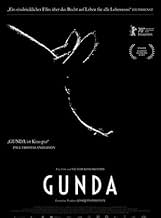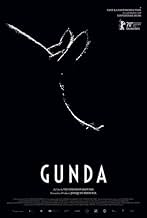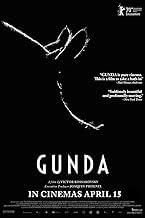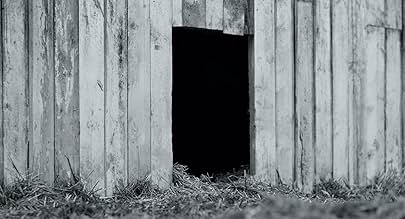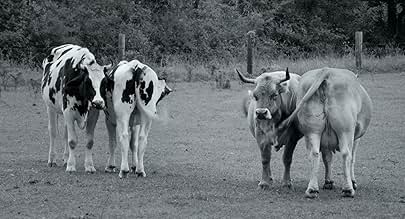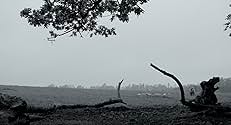VALUTAZIONE IMDb
7,1/10
3123
LA TUA VALUTAZIONE
Il documentario racconta la vita quotidiana di un maiale e dei suoi compagni animali da fattoria: due mucche e una gallina con solo una gamba.Il documentario racconta la vita quotidiana di un maiale e dei suoi compagni animali da fattoria: due mucche e una gallina con solo una gamba.Il documentario racconta la vita quotidiana di un maiale e dei suoi compagni animali da fattoria: due mucche e una gallina con solo una gamba.
- Regia
- Sceneggiatura
- Star
- Premi
- 9 vittorie e 32 candidature totali
Recensioni in evidenza
This is a superb piece of filmmaking that gives the viewer a real insight in to the lives of pigs and cows on higher welfare farms and of free to roam hens. No one who watches this film could doubt the sentience of its subjects or their individuality. The incredibly devoted mother pig at the centre of this film and a one legged hen are exhibits A and B in this regard. Sound is used to particularly good effect, both in the capture of the farm and country noises and in the complete absence of any commentary. The black and white footage adds to the beauty of the piece but I can't help thinking that the complete absence of colour ultimately detracts a little from an otherwise wholly authentic film. The film may not turn you into a vegetarian or a vegan but for me it surely supports an argument that particularly in the rich developed world all animals should be raised to at least "freedom food" standards and that its an indictment of modern society that some of the richest countries have the poorest animal welfare standards.
Looks like this film sometimes can't decide what it wants itself to be. Overall, it uses a highly poetic language with desaturated picture and "commercial" outlook with long dolly shots, wide angles and slow motion. At the same time, it always tends to be on animals' eyes level, depicting some of the unpleasant and cruel aspects of their life. However, it seems that camera is sometimes shy about what it sees, notably putting pig's back out of focus in final scene - which inevitably drives us to a conclusion that it's the human look on the animal, even if there's not a single human in frame. Surprisingly, the most coherent and touching part of three isolated novels is the one about chicken - particularly because of non-intrusive and highly tactile camera work.
Gunda stays somewhere between brutal realism of life and romantic pamphlet against cruelty to animals, mixing together two incompatible aesthetic approaches. However, a film like this had to be made, and I hope it will influence other filmmakers to experiment with storytelling from an animal point of view.
Gunda stays somewhere between brutal realism of life and romantic pamphlet against cruelty to animals, mixing together two incompatible aesthetic approaches. However, a film like this had to be made, and I hope it will influence other filmmakers to experiment with storytelling from an animal point of view.
A stunning black and white silent (save the grunting) documentary that soft focuses on the life of a pig. Seems innocuous enough, but there is magic here. Shot at ground level, and sparing nothing from farm life, "Gunda" is not here to shock, or illicit clown tears, but to have a look, like a wide-eyed child might back in the day when summers were not filled with organized sports camps or school continuation. It captures that slow, languid, breezy feel of beautiful boredom.
Opening with the birth of a litter, it follows the towering mother sow as she clumsily deals with the runt of her offspring. It is astonishing, inviting, and then shockingly cruel. What is happening is not exactly clear, and there is no deep voice over to mansplain nature. That is the beauty of this film: it evolves along with the undetermined storyline.
A slow, dreamy bit of cinema, "Gunda" works well in transporting the audience to a world most are familiar with but few actually know or have experienced hands on. The sharp monochrome delivery turns a pigsty into a pleasant aesthetic. The absence of smell helps. Nothing revelatory here, and since this is a farm, well, let's just say that the animals are not in charge, and there is a sudden dramatic turn to remind everyone about life's cold harsh realities.
"Gunda" is an animal film that is really not an animal film. It is a brilliant exercise in moment capture, shot with an addictive lens, documenting some life lessons, without preaching or dwelling on anything in particular. Pigs in showbiz are usually funny, smart or exotic. Not here. "Gunda" is a mother, and that is that.
Opening with the birth of a litter, it follows the towering mother sow as she clumsily deals with the runt of her offspring. It is astonishing, inviting, and then shockingly cruel. What is happening is not exactly clear, and there is no deep voice over to mansplain nature. That is the beauty of this film: it evolves along with the undetermined storyline.
A slow, dreamy bit of cinema, "Gunda" works well in transporting the audience to a world most are familiar with but few actually know or have experienced hands on. The sharp monochrome delivery turns a pigsty into a pleasant aesthetic. The absence of smell helps. Nothing revelatory here, and since this is a farm, well, let's just say that the animals are not in charge, and there is a sudden dramatic turn to remind everyone about life's cold harsh realities.
"Gunda" is an animal film that is really not an animal film. It is a brilliant exercise in moment capture, shot with an addictive lens, documenting some life lessons, without preaching or dwelling on anything in particular. Pigs in showbiz are usually funny, smart or exotic. Not here. "Gunda" is a mother, and that is that.
- hipCRANK.
Greetings again from the darkness. We open on a pig in prone position with her head sticking through an opening in the barn. It takes a minute to realize the sow isn't sleeping, but rather giving birth. Slowly the newborn piglets begin tumbling out into the world. Cutting to a reverse camera angle, we see the 12-13 babies desperately trying to latch onto mom for their first meal. The runt of the litter struggles more than the others. Award-winning filmmaker Viktor Kosakovskiy runs this first segment just over 19 minutes. There is no dialogue. No human on screen. The soundtrack is all natural from nature: the snorts from mama sow, the squeals from piglets, and unseen birds chirping.
Our second segment finds roosters in a crate. Clearly new to the surroundings, and likely never-before "free" to roam the land, these chickens cautiously explore as the camera focuses on their tentative initial steps from the cage and startled reactions to birds. A one-legged rooster captures our attention as it makes its way through the grass and over fallen logs. It's likely the longest amount of time a movie camera has been dedicated to following roosters around.
We then head back to find the piglets have grown substantially. We don't know how much time has passed, but we watch along with their mother as the youngsters play in the field, fight with each other, and bully their youngest sibling. Gunda, the mother sow, watches over them just as any mother would watch over her kids. Our third group is introduced as the barn door opens and the cows are released. They romp into the fields like school kids at recess. Some of the cows stare directly into the camera as if to inform us they are ready for their close-up. It's fascinating to see how they use teamwork for an ingenious head-to-tail solution to the annoying flies that relentlessly pester them.
The final segment returns us to the pigs as they display the same feeding frenzy as one might witness at the buffet on a Carnival cruise. An ending that will surely evoke emotions in viewers, though maybe not at the extreme of Gunda herself. Filmmaker Kosakovskiy leaves us wondering how a black and white film with no dialogue or human characters makes such an impression as it focuses on farm animals. Pork, chicken, and beef. Clearly it's no coincidence that he chose three staples of the American diet. There is no lecture on animal rights, and none of the brutality of other "raised for food" documentaries is shown. But the message is there. It was filmed on farms in Norway, Spain, and the U. K., but the locales matter little. Director Kosakovskiy previously brought us the excellent AQUARELA (2018), a documentary showcasing the nature of water and ice, and here he assisted Egil Haskjold Larsen with cinematography, and Ainara Vera with editing. It's an unusual film, and one meant to inspire reflection and thought ... and hopefully change.
In theaters beginning April 16, 2021.
Our second segment finds roosters in a crate. Clearly new to the surroundings, and likely never-before "free" to roam the land, these chickens cautiously explore as the camera focuses on their tentative initial steps from the cage and startled reactions to birds. A one-legged rooster captures our attention as it makes its way through the grass and over fallen logs. It's likely the longest amount of time a movie camera has been dedicated to following roosters around.
We then head back to find the piglets have grown substantially. We don't know how much time has passed, but we watch along with their mother as the youngsters play in the field, fight with each other, and bully their youngest sibling. Gunda, the mother sow, watches over them just as any mother would watch over her kids. Our third group is introduced as the barn door opens and the cows are released. They romp into the fields like school kids at recess. Some of the cows stare directly into the camera as if to inform us they are ready for their close-up. It's fascinating to see how they use teamwork for an ingenious head-to-tail solution to the annoying flies that relentlessly pester them.
The final segment returns us to the pigs as they display the same feeding frenzy as one might witness at the buffet on a Carnival cruise. An ending that will surely evoke emotions in viewers, though maybe not at the extreme of Gunda herself. Filmmaker Kosakovskiy leaves us wondering how a black and white film with no dialogue or human characters makes such an impression as it focuses on farm animals. Pork, chicken, and beef. Clearly it's no coincidence that he chose three staples of the American diet. There is no lecture on animal rights, and none of the brutality of other "raised for food" documentaries is shown. But the message is there. It was filmed on farms in Norway, Spain, and the U. K., but the locales matter little. Director Kosakovskiy previously brought us the excellent AQUARELA (2018), a documentary showcasing the nature of water and ice, and here he assisted Egil Haskjold Larsen with cinematography, and Ainara Vera with editing. It's an unusual film, and one meant to inspire reflection and thought ... and hopefully change.
In theaters beginning April 16, 2021.
At first, we can't grasp what we are seeing, and it takes a while to sink in. Throughout the film, both beauty and reality will often rise up to temporarily disorient, take our breath away, and even overwhelm.
This is not your cute animal film, though it has that too. It's more akin to those moments of serenity and joy that can arise when we are watching babies move or small children explore. We feel both intimacy and otherness, and perhaps even bewilderment.
In my imagination it doesn't seem impossible that this film could be nominated for awards beyond Best Documentary. It would need its own version of Script Writing, Choreography, Directing, Editing, and Producing.
But the Cinematography! Obviously it's often spontaneous and even seat-of-the-pants. Somehow there is an endless outpouring of breath-taking photographic moments in high-resolution black and white. Will there be a picture book?
It's not that the shots are a miracle of technique; I'm sure they are. It's more how they touch such a wide range of feeling. A world is created and then ...
Like the beginning, the ending takes a while to sink in. Hushed. Eye and heart, conscience and consciousness, awakened.
This is not your cute animal film, though it has that too. It's more akin to those moments of serenity and joy that can arise when we are watching babies move or small children explore. We feel both intimacy and otherness, and perhaps even bewilderment.
In my imagination it doesn't seem impossible that this film could be nominated for awards beyond Best Documentary. It would need its own version of Script Writing, Choreography, Directing, Editing, and Producing.
But the Cinematography! Obviously it's often spontaneous and even seat-of-the-pants. Somehow there is an endless outpouring of breath-taking photographic moments in high-resolution black and white. Will there be a picture book?
It's not that the shots are a miracle of technique; I'm sure they are. It's more how they touch such a wide range of feeling. A world is created and then ...
Like the beginning, the ending takes a while to sink in. Hushed. Eye and heart, conscience and consciousness, awakened.
Lo sapevi?
- QuizJoaquin Phoenix and Paul Thomas Anderson were amongst the first people in the industry to publicly praise the film.
- BlooperGunda is shown wallowing in mud and the mud covers her teats. In the next sequence, her piglets suckle her teats which are suddenly clean.
I più visti
Accedi per valutare e creare un elenco di titoli salvati per ottenere consigli personalizzati
Dettagli
- Data di uscita
- Paesi di origine
- Siti ufficiali
- Lingua
- Celebre anche come
- Gunda: Mother, Pig
- Luoghi delle riprese
- Grøstad farm, Undrumsdal in Tønsberg municipality, Norvegia(the pig farm location)
- Aziende produttrici
- Vedi altri crediti dell’azienda su IMDbPro
Botteghino
- Lordo Stati Uniti e Canada
- 115.691 USD
- Fine settimana di apertura Stati Uniti e Canada
- 5023 USD
- 18 apr 2021
- Lordo in tutto il mondo
- 383.128 USD
- Tempo di esecuzione1 ora 33 minuti
- Colore
- Proporzioni
- 1.85 : 1
Contribuisci a questa pagina
Suggerisci una modifica o aggiungi i contenuti mancanti





